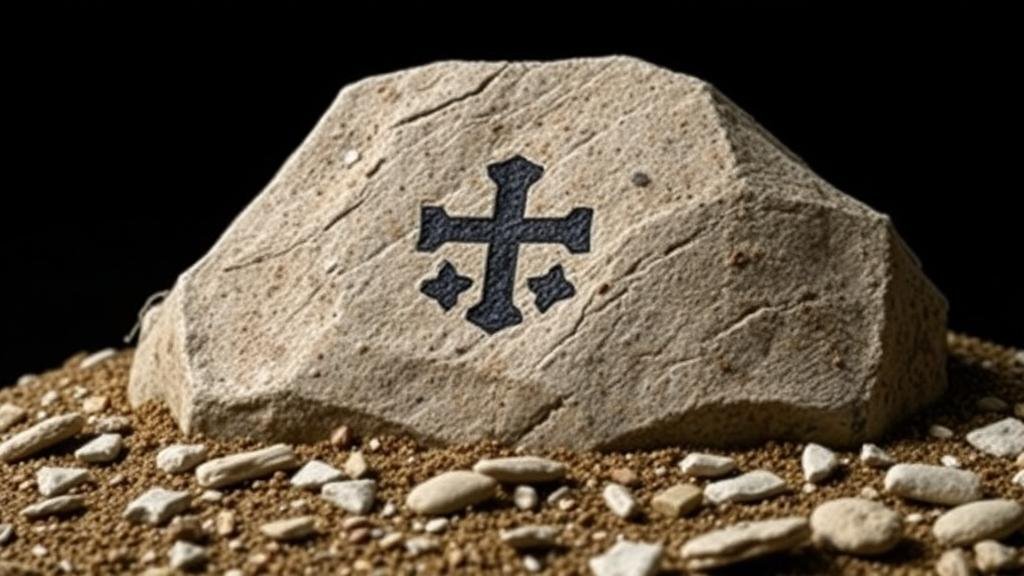Recognizing the Presence of Guarded Treasure Through Marker Stones and Symbols
Recognizing the Presence of Guarded Treasure Through Marker Stones and Symbols
The search for buried treasure has fascinated humanity for centuries, driven by tales of lost riches and whispered legends. Central to these quests are marker stones and symbols–clues left behind by treasure guardians. Understanding how to recognize and interpret these indicators is vital for successful treasure hunting. This article explores the significance of marker stones and symbols, offering insights into their historical context, identification techniques, and real-world applications.
The Historical Context of Marker Stones and Symbols
Marker stones and symbols have been utilized across cultures and time periods as a way to denote important locations, including the presence of hidden treasures. Often, these stones are strategically placed in areas of archaeological or historical significance. For example, the ancient Romans utilized stone markers known as milestones to denote roads and treasures associated with them. Similarly, Native American cultures used rock art to convey messages about locations of resources, including potential treasure sites.
Also, European folklore often includes the concept of treasure maps, with visual indicators guiding the seeker to coveted riches. These traditions underline the importance of understanding regional symbols and the potential they hold for treasure seekers today.
Identifying Marker Stones
Marker stones come in various forms, each with distinct characteristics. Here are some common types recognized in treasure hunting:
- Monoliths: Large standing stones that often signify a particular location of importance.
- Carved Stones: Stones with engravings or symbols that may indicate direction or landmarks.
- Boundary Stones: Often used to denote ownership or important land boundaries that could point toward hidden treasures.
The process of identifying these stones involves careful observation of geological formations and human alterations. For example, if you come across a stone that seems out of place in its natural setting–such as an unusually shaped rock in a field–it could serve as a marker for something significant. Historical maps, local lore, and oral histories can further aid in recognizing the importance of such stones.
Decoding Symbols
Symbols associated with buried treasures vary significantly between cultures. Understanding their meanings is crucial for decoding potential treasure locations. Common symbols include:
- The Cross: Often indicates a grave or a treasure buried under a large tree.
- The Triangle: Can symbolize a point of convergence, possibly referencing multiple treasures or directions.
- The Owl: Associated with wisdom, its presence may indicate a hidden secret or treasure protected by the guardians wisdom.
Decoding these symbols typically requires cross-referencing with local folklore or historical texts. For example, the famous treasure of the Oak Island Money Pit in Nova Scotia involves various symbols that cryptologists have attempted to decode over the years, revealing hints of the treasure’s location and what might protect it.
Case Studies of Successful Treasure Hunts
Several real-world treasure hunts exemplify successfully leveraging marker stones and symbols. One notable example is the search for pirate treasure in the Caribbean, where renowned pirate Captain Henry Morgan was rumored to have buried his wealth. Clues in the form of engraved stones found on remote islands in the Caribbean often led treasure hunters to further clues and ultimately successful finds.
Another case is the El Dorado legend in South America, where explorers utilized local tribal markers and symbols to guide their search for gold. While many expeditions were unsuccessful, the pursuit has led to significant archaeological discoveries about ancient civilizations, demonstrating that the search for treasure can also yield invaluable historical knowledge.
Practical Tips for Modern Treasure Hunters
For those looking to embark on a treasure-hunting adventure, consider the following actionable takeaways:
- Research Historical Context: Understanding the history of an area can provide critical insight into what symbols or markers to look for.
- Use Technology: Modern tools such as ground-penetrating radar and GIS (Geographic Information Systems) can enhance your search for buried treasures.
- Engage with Local Communities: Leakage of local knowledge through community stories can often point you to unmarked resources.
In summary, recognizing the presence of guarded treasure through marker stones and symbols requires an amalgamation of historical knowledge, analytical skills, and modern technology. By understanding the significance of these markers and actively engaging with the local lore and community, treasure hunters can heighten their chances of successful exploration. Ultimately, the journey itself can reveal rich historical insights, irrespective of the treasures actual discovery.



